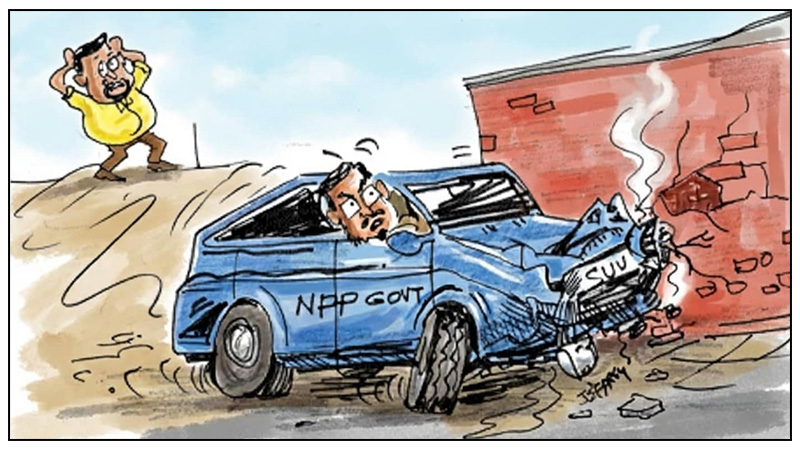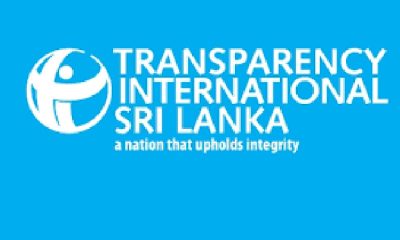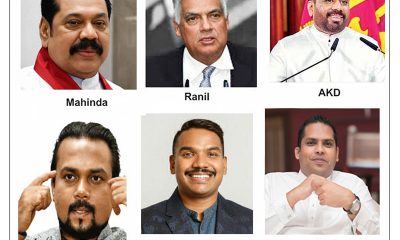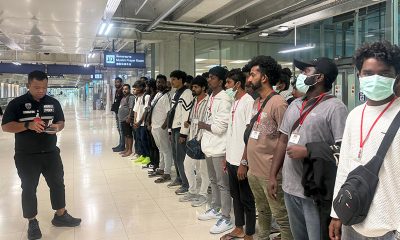Opinion
Nano nitrogen and nano urea

By Prof. O.A. Ileperuma
Concerns about the non-availability of chemical fertiliser are widespread. Agricultural communities and farmers are venting their anger at the minister and the government. Farmers have even threatened to abandon their Maha paddy cultivation, and such action will have a devastating effect on our food security. This will severely affect the self-sufficiency of rice we have achieved through the dedicated efforts of our rice breeder scientists in the Agriculture Department. The earlier contention of going fully organic with compost was an ill-advised decision taken by the Government. Recently, European Union countries decided to go for 25 percent organic by 2030, understanding what is possible and what is impossible. I have dealt with the futility of moving towards 100 percent compost in my article in The Island on 01 May, 2021, since compost does not provide the required nutrients in sufficient amounts for healthy plant growth.
The authorities have finally decided to import ‘nano nitrogen’ liquid fertiliser from India where it is undergoing field trials right now. Although the authorities have arbitrarily called this nano nitrogen, it is really a product best classified as nano urea. The manufacturer itself has labelled the product nano urea and our Agriculture Ministry officials have ‘invented’ a new label calling the liquid fertiliser nano nitrogen. Our Minister of Agriculture has been misled by the officials who painted the story that we are importing nano nitrogen and not nano urea. He appears so sure of the name of this product that he went on to complain to the CID against MP Patali Champika Ranawake who pointed out, quite correctly, that it is not nano nitrogen but nano urea. Further, MP Ranawaka has publicly accused Government politicians of bloating the price from $ 7.74 per litre at the manufacturer to $25 per litre in Sri Lanka requesting an explanation for such a huge price difference.
It remains to be seen whether this fertiliser is effective for our agriculture, encompassing all sectors in addition to rice. There are several misconceptions among our learned authorities about whether nano nitrogen imported from India is chemical or organic, meaning a natural product. It is important for the general public to know about the nature of this nano nitrogen fertiliser. Some important facts are: The meaning of nano, and how the so-called nano nitrogen liquid is made and the results of field trials in India.
Nanoparticles are extremely small particles defined as those having diameters in the range of one to 100 nanometres. A nanometre (nm) is one billionth of a metre and they cannot be seen with the naked eye. Milk, for example, is an emulsion with casein micelles of sizes between 50 to 600 nm. Nano nitrogen liquid imported from India is prepared by first mixing conventional urea with hydroquinone. This mixture is then sprayed onto calcium cyanamide powder and finally dispersed into nanosized particles. The final product carries one percent hydroquinone, 10 percent calcium cyanamide and close to 90 percent urea. The resultant nanoparticles are reported to possess sizes ranging from 20 to 50 nm. Calcium cyanamide eventually reacts with water giving ammonia and it is one of the oldest nitrogen fertilisers used.
Nano nitrogen was discovered by Dr. Ramish Ralia while working in an American laboratory. He joined the Indian Farmers Fertiliser Cooperative Limited (IFFCO), one of India’s biggest cooperative societies which has now supplied nano urea to Sri Lanka. According to field trials conducted by IFFCO, they claim that a 500 millilitre bottle of nano urea can replace a 45 kg bag of urea. This is hard to believe since this bottle adds only about 20 g of urea because it contains only four percent nitrogen while a 45 kg bag of urea provides 21 kg of nitrogen. Even if 40 percent of the conventional urea added is absorbed by plants it works out to 8.4 kg of nitrogen taken up by the plants which is over 400 times provided by nano urea. Unlike urea which is applied to soil, nano urea liquid is sprayed directly on to leaves where it gets absorbed through the stomatal openings of leaves.
In spite of the projected advantage of nano urea over conventional urea, it cannot supply the initial nitrogen requirements for growing rice, vegetables and other crops. Urea is needed at the initial stage of planting. Nano urea is useful only at a later stage of plant growth where the plants have developed leaves. Application of nano urea at the initial stage is scientifically meaningless and a wasteful exercise. Based on the requirement of urea stipulated by the Agriculture Department, the urea requirement is 225 kg per hectare for the dry zone. At the current price of urea which is Rs 3,430 per 50 kg (without subsidy), what a farmer has to incur is Rs. 15,435, for the dry zone. For the wet zone where the requirement of urea is only 140 kg per hectare, the expenditure would be Rs. 9,604. To provide the same nitrogen requirement to one hectare of paddy fields a farmer has to spray 1250 litres of nano urea. According to Government estimates with each litre of nano urea costing Rs. 1,250, the total cost comes to around Rs. 156,250 per hectare. However, the Government is distributing only 2.5 litres of nano urea per hectare which is totally insufficient and will severely reduce rice production. Even if the Government distributes the imported nano urea free of charge, ultimately the money comes from public funds which is an utter waste of taxpayers’ money. Why the Agriculture Ministry officials do not see this simple arithmetic is astonishing and unpardonable. Moreover, field trials carried out in India are not sufficient for a critical assessment of the efficacy of nano urea and further field trials are necessary in Sri Lanka to determine the accuracy of the Indian claims.
We should also consider the health effects due to exposure to nanoparticles such as those in nano urea. The world has yet to understand the health effects of nanofertilisers and inhalation of such small particles into the lung can have adverse health effects. Air pollution studies have revealed that the most dangerous of all air pollutants are fine particles which go right into the alveoli of lungs and cause bronchitis, chronic obstructive pulmonary disease (COPD), heart diseases and even cancer.
Sri Lankan scientists have reported a different form of nano urea way back in 2012. The work of Prof. Nilwala Kottegoda and her team at the Sri Lanka Institute of Nanotechnology revealed that when urea is adsorbed on hydroxyapatite nanoparticles and applied to paddy fields, it acts as a slow release nitrogen fertiliser resulting in the gradual release of urea to the plant compared to direct application of conventional urea which gets leached out to an extent of about 60 to 70 percent. In this manner the amount of urea required to be applied to soil can be conveniently reduced to around half of what is applied now. The hydroxyapatite can be readily prepared from the Eppawala phosphate deposit. Furthermore, the apatite also decomposes slowly yielding much needed phosphorus nutrients for the healthy growth of plants. Unfortunately, our Government did not use this valuable discovery by Sri Lankan scientists which is often the case with local inventions and discoveries. Politicians take the risk of fast tracking things for short term political gains; scientists come out with suggestions after careful weighing of benefits and disadvantages. Obviously the 10-year agriculture plan of ‘Vistas of Prosperity’ suffered the same fate in the hands of politicians, over the ‘Wiyathun’ who planned it.
While the government is talking about nitrogen and has even imported potash, there is a missing link in the NPK (nitrogen, phosphorus and potassium) formula of fertilisers and what is missing is phosphorus. Traditionally, phosphorus nutrient has been supplied through imported triple superphosphate. Successive governments have talked about making phosphate fertiliser using our own Eppawela rock phosphate deposit. This is restricted to NATO (no action, talk only) since some unseen hands are preventing this from being implemented. This writer along with other experts submitted a comprehensive proposal for the manufacture of single superphosphate (SSP) fertiliser from Eppawala phosphate to the Minister of Agriculture in 2018. There are at least two cabinet decisions empowering Lanka Phosphate Limited to undertake this project but no action has been taken to commence the local manufacture of phosphate fertiliser.
It is not clear what the Government is planning, regarding the supply of the essential triple superphosphate. Initial fertiliser (‘Mada pohora’) requires urea, triple superphosphate and potash. In the same way babies require calcium and phosphorus for the development of bones, supplied through milk, plants too need phosphates for healthy growth. Phosphorus deficiency causes stunted growth and hence poorer yields. Unlike urea, which decomposes giving oxides of nitrogen after a few days, phosphate binds to the soil and remains in the soil for a much longer period and hence farmers may not immediately need phosphate during one season.
It is of no use to supply nano urea now at the planting stage. This will only promote weed growth and farmers have no way of controlling them in the absence of weedicides. It will only be useful at a later stage as ‘Bandi Pohora’ when the leaves have fully developed. Even the manufacturer claims that it is used as a supplementary fertiliser and will not replace the initial requirement of nitrogen fertiliser. Hence the farmers, their agitation fuelled by extensive experience, will most likely continue to suffer with their livelihoods destroyed. At the end the agricultural productivity of the country would be severely affected.
Opinion
Disasters do not destroy nations; the refusal to change does

Sri Lanka has endured both kinds of catastrophe that a nation can face, those caused by nature and those created by human hands. A thirty-year civil war tore apart the social fabric, deepening mistrust between communities and leaving lasting psychological wounds, particularly among those who lived through displacement, loss, and fear. The 2004 tsunami, by contrast, arrived without warning, erasing entire coastal communities within minutes and reminding us of our vulnerability to forces beyond human control.
These two disasters posed the same question in different forms: did we learn, and did we change? After the war ended, did we invest seriously in repairing relationships between Sinhalese and Tamil communities, or did we equate peace with silence and infrastructure alone? Were collective efforts made to heal trauma and restore dignity, or were psychological wounds left to be carried privately, generation after generation? After the tsunami, did we fundamentally rethink how and where we build, how we plan settlements, and how we prepare for future risks, or did we rebuild quickly, gratefully, and then forget?
Years later, as Sri Lanka confronts economic collapse and climate-driven disasters, the uncomfortable truth emerges. we survived these catastrophes, but we did not allow them to transform us. Survival became the goal; change was postponed.
History offers rare moments when societies stand at a crossroads, able either to restore what was lost or to reimagine what could be built on stronger foundations. One such moment occurred in Lisbon in 1755. On 1 November 1755, Lisbon-one of the most prosperous cities in the world, was almost completely erased. A massive earthquake, estimated between magnitude 8.5 and 9.0, was followed by a tsunami and raging fires. Churches collapsed during Mass, tens of thousands died, and the royal court was left stunned. Clergy quickly declared the catastrophe a punishment from God, urging repentance rather than reconstruction.
One man refused to accept paralysis as destiny. Sebastião José de Carvalho e Melo, later known as the Marquês de Pombal, responded with cold clarity. His famous instruction, “Bury the dead and feed the living,” was not heartless; it was revolutionary. While others searched for divine meaning, Pombal focused on human responsibility. Relief efforts were organised immediately, disease was prevented, and plans for rebuilding began almost at once.
Pombal did not seek to restore medieval Lisbon. He saw its narrow streets and crumbling buildings as symbols of an outdated order. Under his leadership, Lisbon was rebuilt with wide avenues, rational urban planning, and some of the world’s earliest earthquake-resistant architecture. Moreover, his vision extended far beyond stone and mortar. He reformed trade, reduced dependence on colonial wealth, encouraged local industries, modernised education, and challenged the long-standing dominance of aristocracy and the Church. Lisbon became a living expression of Enlightenment values, reason, science, and progress.
Back in Sri Lanka, this failure is no longer a matter of opinion. it is documented evidence. An initial assessment by the United Nations Development Programme (UNDP) following Cyclone Ditwah revealed that more than half of those affected by flooding were already living in households facing multiple vulnerabilities before the cyclone struck, including unstable incomes, high debt, and limited capacity to cope with disasters (UNDP, 2025). The disaster did not create poverty; it magnified it. Physical damage was only the visible layer. Beneath it lay deep social and economic fragility, ensuring that for many communities, recovery would be slow, uneven, and uncertain.
The world today offers Sri Lanka another lesson Lisbon understood centuries ago: risk is systemic, and resilience cannot be improvised, it must be planned. Modern climate science shows that weather systems are deeply interconnected; rising ocean temperatures, changing wind patterns, and global emissions influence extreme weather far beyond their points of origin. Floods, landslides, and cyclones affecting Sri Lanka are no longer isolated events, but part of a broader climatic shift. Rebuilding without adapting construction methods, land-use planning, and infrastructure to these realities is not resilience, it is denial. In this context, resilience also depends on Sri Lanka’s willingness to learn from other countries, adopt proven technologies, and collaborate across borders, recognising that effective solutions to global risks cannot be developed in isolation.
A deeper problem is how we respond to disasters: we often explain destruction without seriously asking why it happened or how it could have been prevented. Time and again, devastation is framed through religion, fate, karma, or divine will. While faith can bring comfort in moments of loss, it cannot replace responsibility, foresight, or reform. After major disasters, public attention often focuses on stories of isolated religious statues or buildings that remain undamaged, interpreted as signs of protection or blessing, while far less attention is paid to understanding environmental exposure, construction quality, and settlement planning, the factors that determine survival. Similarly, when a single house survives a landslide, it is often described as a miracle rather than an opportunity to study soil conditions, building practices, and land-use decisions. While such interpretations may provide emotional reassurance, they risk obscuring the scientific understanding needed to reduce future loss.
The lesson from Lisbon is clear: rebuilding a nation requires the courage to question tradition, the discipline to act rationally, and leadership willing to choose long-term progress over short-term comfort. Until Sri Lanka learns to rebuild not only roads and buildings, but relationships, institutions, and ways of thinking, we will remain a country trapped in recovery, never truly reborn.
by Darshika Thejani Bulathwatta
Psychologist and Researcher
Opinion
A wise Christmas

Important events in the Christian calendar are to be regurlarly reviewed if they are to impact on the lives of people and communities. This is certainly true of Christmas.
Community integrity
Years ago a modest rural community did exactly this, urging a pre-Christmas probe of the events around Jesus’ birth. From the outset, the wisemen aroused curiosity. Who were these visitors? Were they Jews? No. were they Christians? Of course not. As they probed the text, the representative character of those around the baby, became starkly clear. Apart from family, the local shepherds and the stabled animals, the only others present that first Christmas, were sages from distant religious cultures.
With time, the celebration of Christmas saw a sharp reversal. The church claimed exclusive ownership of an inclusive gift and deftly excluded ‘outsiders’ from full participation.
But the Biblical version of the ‘wise outsiders’ remained. It affirmed that the birth of Jesus inspired the wise to initiate a meeting space for diverse religious cultures, notwithstanding the long and ardous journey such initiatives entail. Far from exclusion, Jesus’ birth narratives, announced the real presence of the ‘outsider’ when the ‘Word became Flesh’.
The wise recognise the gift of life as an invitation to integrate sincere explanations of life; true religion. Religion gone bad, stalls these values and distorts history.
There is more to the visit of these sages.
Empire- When Jesus was born, Palestine was forcefully occcupied by the Roman empire. Then as now, empire did not take kindly to other persons or forces that promised dignity and well being. So, when rumours of a coming Kingdom of truth, justice and peace, associated with the new born baby reached the local empire agent, a self appointed king; he had to deliver. Information on the wherabouts of the baby would be diplomatically gleaned from the visiting sages.
But the sages did not only read the stars. They also read the signs of the times. Unlike the local religious authorities who cultivated dubious relations with a brutal regime hated by the people, the wise outsiders by-pass the waiting king.
The boycott of empire; refusal to co-operate with those who take what it wills, eliminate those it dislikes and dare those bullied to retaliate, is characteristic of the wise.
Gifts of the earth
A largely unanswered question has to do with the gifts offered by the wise. What happened to these gifts of the earth? Silent records allow context and reason to speak.
News of impending threats to the most vulnerable in the family received the urgent attention of his anxious parent-carers. Then as it is now, chances of survival under oppressive regimes, lay beyond borders. As if by anticipation, resources for the journey for asylum in neighbouring Egypt, had been provided by the wise. The parent-carers quietly out smart empire and save the saviour to be.
Wise carers consider the gifts of the earth as resources for life; its protection and nourishment. But, when plundered and hoarded, resources for all, become ‘wealth’ for a few; a condition that attempts to own the seas and the stars.
Wise choices
A wise christmas requires that the sages be brought into the centre of the discourse. This is how it was meant to be. These visitors did not turn up by chance. They were sent by the wisdom of the ages to highlight wise choices.
At the centre, the sages facilitate a preview of the prophetic wisdom of the man the baby becomes.The choice to appropriate this prophetic wisdom has ever since summed up Christmas for those unable to remain neutral when neighbour and nature are violated.
Wise carers
The wisdom of the sages also throws light on the life of our nation, hard pressed by the dual crises of debt repayment and post cyclonic reconstruction. In such unrelenting circumstances, those in civil governance take on an additional role as national carers.
The most humane priority of the national carer is to ensure the protection and dignity of the most vulnerable among us, immersed in crisis before the crises. Better opportunities, monitored and sustained through conversations are to gradually enhance the humanity of these equal citizens.
Nations in economic crises are nevertheless compelled to turn to global organisations like the IMF for direction and reconstruction. Since most who have been there, seldom stand on their own feet, wise national carers may not approach the negotiating table, uncritically. The suspicion, that such organisations eventually ‘grow’ ailing nations into feeder forces for empire economics, is not unfounded.
The recent cyclone gave us a nasty taste of these realities. Repeatedly declared a natural disaster, this is not the whole truth. Empire economics which indiscriminately vandalise our earth, had already set the stage for the ravage of our land and the loss of loved ones and possessions. As always, those affected first and most, were the least among us.
Unless we learn to manouvre our dealings for recovery wisely; mindful of our responsibilities by those relegated to the margins as well as the relentles violence and greed of empire, we are likely to end up drafted collaborators of the relentless havoc against neighbour and nature.
If on the other hand the recent and previous disasters are properly assessed by competent persons, reconstruction will be seen as yet another opportunity for stabilising content and integrated life styles for all Lankans, in some harmony with what is left of our dangerously threatened eco-system. We might then even stand up to empire and its wily agents, present everywhere. Who knows?
With peace and blessings to all!
Bishop Duleep de Chickera
Opinion
Ranwala crash: Govt. lays bare its true face

The NPP government is apparently sinking into a pit dug by the one of its members, ‘Dr’ Asoka Ranwala; perhaps a golden pit (Ran Wala) staying true to his name! Some may accuse me of being unpatriotic by criticising a government facing the uphill task of rebuilding the country after an unprecedented catastrophe. Whilst respecting their sentiment, I cannot help but point out that it is the totally unwarranted actions of the government that is earning much warranted criticism, as well stated in the editorial “Smell of Power” (The Island, 15 December). Cartoonist Jeffrey, in his brilliance, has gone a step further by depicting Asoka Ranwala as a giant tsunami wave rushing to engulf the tiny NPP house in the shore, AKD is trying to protect. (The Island, 18 December).
The fact that Asoka Ranwala is very important to the JVP, for whatever reason, became evident when he was elected the Speaker of Parliament despite his lack of any parliamentary experience. When questions were raised about his doctorate in Parliament, Ranwala fiercely defended his position, ably supported by fellow MPs. When the Opposition kept on piling pressure, producing evidence to the contrary, Ranwala stepped aside, claiming that he had misplaced the certificate but would stage a comeback, once found. A year has passed and he is yet to procure a copy of the certificate, or even a confirmatory letter from the Japanese university!
The fact that AKD did not ask Ranwala to give up his parliamentary seat, a decision he may well be regretting now following recent events, shows that either AKD is not a strong leader who can be trusted to translate his words to action or that Ranwala is too important to be got rid of. In fact, AKD should have put his foot down, as it was revealed that Ranwala was a hypocrite, even if not a liar. Ranwala led the campaign to dismantle the private medical school set up by Dr Neville Fernando, which was earning foreign exchange for the country by recruiting foreign students, in addition to saving the outflow of funds for educating Sri Lankan medical graduates abroad. He headed the organisation of parents of state medical students, claiming that they would be adversely affected, and some of the photographs of the protests he led refer to him as Professor Ranwala! Whilst leading the battle against private medical education, Ranwala claims to have obtained his PhD from a private university in Japan. Is this not the height of hypocrisy?
The recent road traffic accident he was involved in would have been inconsequential had Ranwala been decent enough to leave his parliamentary seat or, at least, being humble enough to offer an apology for his exaggerated academic qualifications. After all, he is not the only person to have been caught in the act of embellishing a CV. As far as the road traffic accident is concerned, too, it may not be his entire responsibility. Considering the chaotic traffic, in and around Colombo, coupled with awful driving standards dictated by lack of patience and consideration, it is a surprise that more accidents do not happen in Sri Lanka. Following the accident, may be to exonerate from the first count, a campaign was launched by NPP supporters stating that a man should be judged on his achievements, not qualifications, further implying that he does not have the certificate because he got it in a different name!
What went wrong was not the accident, but the way it was handled. Onlookers claim that Ranwala was smelling of alcohol but there is no proof yet. He could have admitted it even if he had taken any alcohol, which many do and continue to drive in Sri Lanka. After all, the Secretary to the Ministry overseeing the Police was able to get the charge dropped after causing multiple accidents while driving under the influence of liquor! He, with another former police officer, sensing the way the wind was blowing formed a retired police collective to support the NPP and were adequately rewarded by being given top jobs, despite a cloud hanging over them of neglect of duty during the Easter Sunday attacks. This naïve political act brought the integrity of the police into question. The way the police behaved after Ranwala’s accident confirmed the fears in the minds of right-thinking Sri Lankans.
In the euphoria of the success of a party promising a new dawn, unfortunately, many political commentators kept silent but it is becoming pretty obvious that most are awaking to the reality of a false dawn. It could not have come at a worse time for the NPP: in spite of the initial failures to act on the warnings regarding the devastating effects of Ditwah, the government was making good progress in sorting problems out, when Ranwala met with an accident.
The excuses given by the police for not doing a breathalyser test, or blood alcohol levels, promptly, are simply pathetic. Half-life of alcohol is around 4-5 hours and unless Ranwala was dead drunk, it is extremely unlikely any significant amounts of alcohol would be detected in a blood sample taken after 24 hours. Maybe the knowledge of this that made government Spokesmen to claim boldly that proper action would be taken irrespective of the position held. Now that the Government Analyst has not found any alcohol in the blood, no action is needed! Instead, the government seems to have got the IGP to investigate the police. Would any police officers suffer for doing a favour to the government? That is the million-dollar question!
Unfortunately, all this woke up a sleeping giant; a problem that the government hoped would be solved by the passage of time. If the government is hoping that the dishonesty of one of its prominent members would be forgotten with the passage of time, it will be in for a rude shock. When questioned by journalists repeated, the Cabinet spokesman had to say action would be taken if the claim of the doctorate was false. However, he added that the party has not decided what that action would be! What about the promise to rid Parliament of crooks?
It is now clear that the NPP government is not any different from the predecessors and that Sri Lankan voters are forced to contend with yet another false dawn!
by Dr Upul Wijayawardhana ✍️
-

 News2 days ago
News2 days agoMembers of Lankan Community in Washington D.C. donates to ‘Rebuilding Sri Lanka’ Flood Relief Fund
-

 Business6 days ago
Business6 days agoUnlocking Sri Lanka’s hidden wealth: A $2 billion mineral opportunity awaits
-

 News6 days ago
News6 days agoArmy engineers set up new Nayaru emergency bridge
-

 News6 days ago
News6 days agoTISL, civil society flay NPP govt. for holding up Auditor General’s appointment
-

 Latest News5 days ago
Latest News5 days agoLandslide early warnings issued to the districts of Badulla, Kandy, Kurunegala, Matale and Nuwara-Eliya extended till 8AM on Sunday (21)
-

 Opinion6 days ago
Opinion6 days agoThe Maha Jana Handa at Nugegoda, cyclone destruction, and contenders positioning for power in post-NPP Sri Lanka – II
-

 Latest News6 days ago
Latest News6 days agoTannane goal from own half sets Morocco on way to FIFA Arab Cup 2025 title
-

 News6 days ago
News6 days agoSri Lankans rescued from cybercrime centers in Myanmar repatriated













